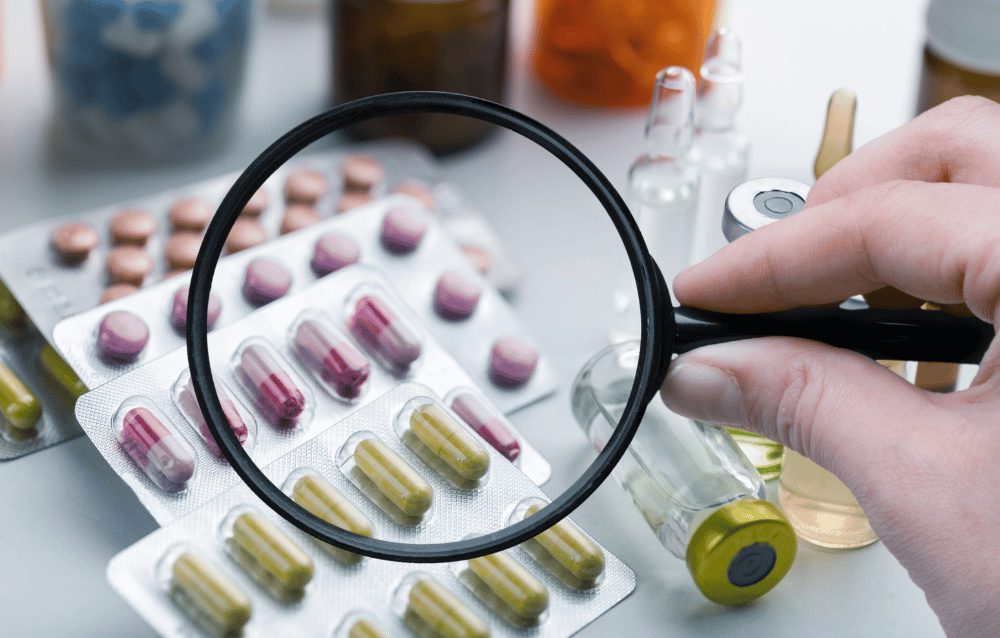How Packaging & Technology Support Anti-counterfeiting in Pharma
Pharma
February 22, 2023Reading time: 3 minutes

Globally, counterfeit medication trafficking is a large, valuable, and criminal enterprise. The market is estimated to be worth anywhere from $200 billion to $432 billion, funded by illegal activities in all regions of the world regardless of socio-economic standing.1
Recent industry data shows that illicit trafficking of medications impacted at least 137 countries and 2,451 different pharmaceuticals. Seizure of counterfeit medications can and does happen.1 However, the World Health Organization (WHO) suggests that the inability to intercept all falsified pharmaceuticals combined with a general lack of public education about the potential health risks curtails efforts to stop medication trafficking.1
As comprehensive strategies continue to be developed for the larger crisis, pharmaceutical manufacturers are empowered to take action on a smaller but equally as important scale. Tamper-evident pharma packaging is a major step in the right direction, as are advanced innovative anti-counterfeit technologies.
Tamper-proof or tamper-resistant packaging?
In the early 1980s, an individual laced Tylenol OTC pain medication with cyanide, resulting in the deaths of several people in the Chicago area. In 1986, a similar incident occurred in Seattle with cyanide and Excedrin, which also resulted in deaths.2
These tragic incidents demonstrated the necessity for stricter pharma packaging requirements, and the importance of the protective measures the FDA has since put in place. The demand for “tamper-proof pharma packaging” led to both action and confusion. The confusion stems from terminology.
There is no single solution or good manufacturing practice for complete “tamper proofing.” Instead, FDA regulations speak to tamper-evident packaging (TEP) which requires concurrent use of several tampering detection methods.
In short, the FDA defines TEP as providing clear indicators that the contents of an OTC medication package have potentially been accessed and altered after distribution by the manufacturer but before opening by the end user.3
FDA CFR 21 Part 211.132 mandates that manufacturers of any OTC drug product for retail sale use a tamper-evident package that has:
- One or more barriers to entry which, if breached or missing, reasonably provides visible evidence to consumers that tampering has occurred3
- Distinct barrier characteristic (e.g., printed with pattern, name, registered trademark, logo) or packaging design so as to prohibit counterfeit duplication using common materials and/or production processes3
- Labeling that identifies all tamper-resistant features so consumers are altered to what/how to examine OTC products for tampering3
A pharmaceutical blister pack is an ideal example of Tamper Evident Packaging. Medication doses cannot be accessed without damaging the foil lidding and/or blister cavity. Further, the packaging carries warnings to consumers that any evidence of tampering means the medication is not safe to use.
With the proliferation of e-commerce in pharmaceuticals, TEP is playing an even larger role in user safety and anti-counterfeiting strategies. Its success is amplified by advanced technologies aimed at making packaging a significant deterrent to counterfeiting in the billion-dollar global falsified-medication market.
Anti-counterfeit technologies emerge in pharma packaging
There are a number of sophisticated technologies to make packaging more secure and medications less susceptible to anti-counterfeiting. Some examples include:
- Covert unique, inert taggants
- UV luminescence
- Overt color shifting
- Fineline/microtext
- Micro hidden elements detected with a hand held microscope
The FDA supports larger benefits of RFID technology for improved track-and-trace throughout the supply chain. Tags with unique ID’s can be applied inside of cartons or case packs to provide control and authenticate products in the marketplace.
The best deterrents to medication counterfeiting are often multi-layered. New technologies continue to emerge. The pharma industry can work with a trusted packaging supplier such as Amcor to gain a better understanding of available options for primary packaging and cartons, like the insights you’ll find in Exploring Pharmaceutical Blister Packaging Opening Features. Click the button below to download your copy now.

SOURCES
1PubMed Central, National Center for Biotechnology Information, National Library of Medicine, Journal of Global Health, Fighting the global counterfeit medicines challenge: A consumer-facing communication strategy in the US is an imperative - PMC, April 23, 2022
2FTLO Science, Why is Tamper Proof Packaging Important? | FTLOScience, November 22, 2022
3U.S. Food and Drug Administration, CFR - Code of Federal Regulations Title 21, Update November 29, 2022
4FlexPackMag, Innovations in Anti-Counterfeit Packaging | 2021-04-28, April 28, 2021
5iGPS, RFID in the Pharmaceutical Supply Chain Offers Transparency in a Complex Industry - iGPS Logistics, LLC, October 6, 2020
